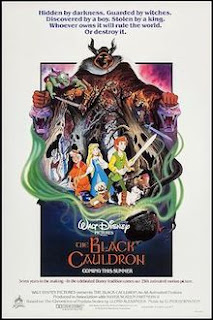Disney Movie Challenge Bonus
Howard (2020)
I hate to say it that I had no idea who Howard Ashman was before I watched this documentary. The fact that he was so integral to the Disney Renaissance and yet was only a part of it for such a small amount of time says a lot about how important he was. When Disney first announced that the film was coming to Disney+ and I saw it was about a songwriter for The Little Mermaid and Beauty and the Beast I figured it would be a good Bonus post but didn’t think it would be that interesting. Turns out it was very interesting and I learned a lot. It also makes me sad that he is gone as I would have loved to see what else he would have written.
So who was Howard Ashman? He was an up and coming songwriter in New York. Before joining Disney he mostly worked on off Broadway plays. He became Artistic Director of the WPA theatre in New York where a number of his plays were performed. It was there he met up with composer Alan Menken who would become his most famous collaborator. Ashman and Menken would go on to write the off Broadway play Little Shop of Horrors which would later become a movie. It was after the success (and first Oscar nomination) of Little Shop of Horrors that Jeffrey Katzenberg contacted him to write a song for Oliver and Company. Katzenberg then asked him to join the production of The Little Mermaid. It was there that Ashman and Menken would go on to change Disney’s future. After winning a couple of Oscars for The Little Mermaid they returned to Disney and helped turn Beauty and the Beast into one of the most beloved movie musicals and started working on songs for Aladdin.
The movie delves into Ashman’s personal stories also. From his time growing up telling stories with his siblings, to his early career in New York City, to his sometimes tumultuous relationships. The story takes a tragic turn when he is diagnosed with AIDS. As a gay man in New York City he had already lost friends to the disease and it was a devastating diagnoses to get as his career was starting to take off. The disease proceeded quickly while he was working on The Little Mermaid. Fearful that Disney would not want word to get out that they had a gay man writing songs for their animated films aimed a children he tried to keep it a secret. It wasn’t till after they had won Oscars that he told Alan Menken. When Jeffrey Katzenberg asked him to do Beauty and the Beast he was honest with him and told him he didn’t have the stamina to come to California. Katzenberg then had the animation team bring storyboards and animations to New York for him to review. No one on the animation team knew the true reason that Ashman wouldn’t fly to California. Also during this time Ashman and Menken were working on music for Aladdin which was Ashman’s passion project. Ashman died shortly before the release of Beauty and the Beast. He won a posthumous Oscar for the title song from the film. The award was accepted by his long time partner.
The movie is told in an interesting way. It uses family, friends, colleagues telling his story but none of them are featured on screen. Everything on screen is archive footage. We get to see Ashman and those around him in action. It’s a story told out of love and appreciation. It’s not trying to uncover any dark secrets. There are no giant reveals that are meant to show him in a negative light. At times it can be a bit surface level but it’s really all we need. It’s a story about how people remember him. It has his successes and his faults and that just leaves you feeling sad that we never got to hear all the stories he had to tell.
Overall: The movie is an insightful look at a person I knew very little about. I’m glad to have learned about him and how much influence he had on the Disney Renaissance. Having the people talking over archived footage can seem disjointed at times but for the most part it works. While it’s not a very hard hitting film and I probably would have been underwhelmed if I saw it in the theatre I think it’s worth checking out on Disney+
Random Facts
After launching his career with Howard Ashman Alan Menken would go on to win a total of 8 Oscars over the years and currently holds the record for most wins by a living person. He also achieved EGOT status by also winning an Emmy, Grammy, and Tony.









